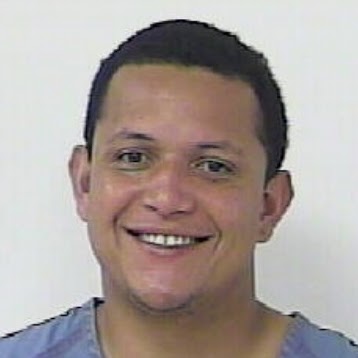Daniel J Weaver
age ~36
from Strasburg, CO
- Also known as:
-
- Daniel Joseph Weaver
- Daniel J Morris
- Daniel Waever
- Daniel Null
Daniel Weaver Phones & Addresses
- Strasburg, CO
- Brighton, CO
- Broomfield, CO
- Arvada, CO
- Wingina, VA
Work
-
Company:Array biopharma inc.
-
Address:3200 Walnut St, Boulder, CO 80301
-
Phones:303 381-6600
-
Position:Manager
-
Industries:Medical Laboratories
License Records
Daniel W Weaver
License #:
ALR.2004005461 - Expired
Type:
Licensed Residential Real Estate Appraiser
Daniel Weaver
Address:
181 N 5 Ave, Brighton, CO 80601
License #:
46231 - Active
Issued Date:
May 8, 2012
Renew Date:
May 8, 2012
Type:
Electrical Apprentice
Daniel A Weaver
License #:
2907003996
Category:
Individual Auctioneer License
Daniel Robert Weaver
License #:
AR92897 - Active
Category:
Architect
Issued Date:
Oct 26, 2005
Effective Date:
Oct 26, 2005
Expiration Date:
Feb 28, 2019
Daniel G Weaver
License #:
NHCG-817 - Expired
Category:
Real Estate Appraiser
Expiration Date:
Dec 31, 2013
Type:
Certified General Appraiser
Daniel G Weaver
License #:
NHCG-884 - Active
Category:
Real Estate Appraiser
Expiration Date:
Oct 31, 2018
Type:
Certified General Appraiser
Medicine Doctors

Daniel T. Weaver
view sourceSpecialties:
Ophthalmology
Work:
Billings ClinicBillings Clinic Downtown
801 N 29 St, Billings, MT 59101
406 238-2500 (phone), 406 238-2590 (fax)
801 N 29 St, Billings, MT 59101
406 238-2500 (phone), 406 238-2590 (fax)
Education:
Medical School
Case Western Reserve University School of Medicine
Graduated: 1981
Case Western Reserve University School of Medicine
Graduated: 1981
Procedures:
Eye Muscle Surgery
Corneal Surgery
Lens and Cataract Procedures
Ophthalmological Exam
Corneal Surgery
Lens and Cataract Procedures
Ophthalmological Exam
Conditions:
Cataract
Fractures, Dislocations, Derangement, and Sprains
Glaucoma
Keratitis
Macular Degeneration
Fractures, Dislocations, Derangement, and Sprains
Glaucoma
Keratitis
Macular Degeneration
Languages:
English
Description:
Dr. Weaver graduated from the Case Western Reserve University School of Medicine in 1981. He works in Billings, MT and specializes in Ophthalmology. Dr. Weaver is affiliated with Billings Clinic Hospital.

Daniel C. Weaver
view sourceSpecialties:
Family Medicine
Work:
Bassett Physician GroupBassett Healthcare Network
544 E Main St, West Winfield, NY 13491
315 822-6348 (phone), 315 822-5600 (fax)
544 E Main St, West Winfield, NY 13491
315 822-6348 (phone), 315 822-5600 (fax)
Education:
Medical School
University of South Alabama College of Medicine
Graduated: 1989
University of South Alabama College of Medicine
Graduated: 1989
Conditions:
Bronchial Asthma
Chronic Sinusitis
Diabetes Mellitus (DM)
Disorders of Lipoid Metabolism
Hypertension (HTN)
Chronic Sinusitis
Diabetes Mellitus (DM)
Disorders of Lipoid Metabolism
Hypertension (HTN)
Languages:
English
Description:
Dr. Weaver graduated from the University of South Alabama College of Medicine in 1989. He works in West Winfield, NY and specializes in Family Medicine. Dr. Weaver is affiliated with Bassett Medical Center.
Us Patents
-
Power Generation And Space Conditioning Using A Thermodynamic Engine Driven Through Environmental Heating And Cooling
view source -
US Patent:7877999, Feb 1, 2011
-
Filed:Apr 13, 2007
-
Appl. No.:11/734854
-
Inventors:Brian P. Nuel - Nederland CO, US
Lee S. Smith - Boulder CO, US
Samuel P. Weaver - Boulder CO, US
Samuel C. Weaver - Knoxville TN, US
Daniel Weaver - Boulder CO, US -
Assignee:Cool Energy, Inc. - Boulder CO
-
International Classification:F01B 29/10
F02G 1/04
F01K 27/00
F01K 1/00
F01K 3/00
F03G 7/00
F03G 6/00 -
US Classification:6064113, 60517, 606411, 606412, 60659, 60398
-
Abstract:A thermodynamic engine is configured to convert heat provided in the form of a temperature difference to a nonheat form of energy. Heat is directed through a heating loop in thermal contact with a first side of the thermodynamic engine. A second side of the thermodynamic engine is coupled to an environmental cooling loop in thermal contact with an environmental cooling device. The thermodynamic engine is operated to dispense heat from the second side of the thermodynamic engine through the environmental cooling loop into the environmental cooling device. Operation of the thermodynamic engine thereby generates the nonheat form of energy from the temperature difference established between the first side and the second side of the thermodynamic engine.
-
Power Generation And Space Conditioning Using A Thermodynamic Engine Driven Through Environmental Heating And Cooling
view source -
US Patent:8539771, Sep 24, 2013
-
Filed:Jan 14, 2011
-
Appl. No.:13/007030
-
Inventors:Brian P. Nuel - Nederland CO, US
Lee S. Smith - Boulder CO, US
Samuel P. Weaver - Boulder CO, US
Samuel C. Weaver - Knoxville TN, US
Daniel Weaver - Boulder CO, US -
Assignee:Cool Energy, Inc. - Boulder CO
-
International Classification:F01K 27/00
F01K 1/00
F03G 7/00
B60L 8/00
B60K 16/00
F01B 29/10
F02G 1/04 -
US Classification:606411, 606412, 606418, 60517, 60659
-
Abstract:A thermodynamic engine is configured to convert heat provided in the form of a temperature difference to a nonheat form of energy. Heat is directed through a heating loop in thermal contact with a first side of the thermodynamic engine. A second side of the thermodynamic engine is coupled to an environmental cooling loop in thermal contact with an environmental cooling device. The thermodynamic engine is operated to dispense heat from the second side of the thermodynamic engine through the environmental cooling loop into the environmental cooling device. Operation of the thermodynamic engine thereby generates the nonheat form of energy from the temperature difference established between the first side and the second side of the thermodynamic engine.
-
Cellulosic Biomass Processing For Hydorgen Extraction
view source -
US Patent:20180131022, May 10, 2018
-
Filed:Jun 19, 2017
-
Appl. No.:15/626337
-
Inventors:- Lenoir City TN, US
Samuel P. Weaver - Boulder CO, US
Daniel C. Weaver - Boulder CO, US
Daniel L. Hensley - Knoxville TN, US -
International Classification:H01M 8/06
C10J 3/72
C10J 3/10 -
Abstract:Methods are disclosed for extracting hydrogen from a biomass compound comprising carbon, oxygen, and hydrogen. The biomass may include cellulose, lignin, and/or hemicellulose. Water is combined with the compound to produce a wet form of the compound. The wet form of the compound is transferred into a reaction processing chamber. The wet form of the compound is heated within the reaction chamber such that elements of the compound dissociate and react, with one reaction product comprising hydrogen gas. The hydrogen gas is processed to generate electrical power.
-
Conversion Of C-O-H Compounds Into Hydrogen For Power Or Heat Generation
view source -
US Patent:20150321910, Nov 12, 2015
-
Filed:Apr 6, 2015
-
Appl. No.:14/679133
-
Inventors:- Lenoir City TN, US
Samuel P. Weaver - Boulder CO, US
Daniel C. Weaver - Boulder CO, US
Daniel L. Hensley - Knoxville TN, US -
International Classification:C01B 3/02
H01M 8/06 -
Abstract:Methods are disclosed for generating electrical power from a compound comprising carbon, oxygen, and hydrogen. Water is combined with the compound to produce a wet form of the compound. The wet form of the compound is transferred into a reaction processing chamber. The wet form of the compound is heated within the reaction chamber such that elements of the compound dissociate and react, with one reaction product comprising hydrogen gas. The hydrogen gas is processed to generate electrical power.
-
Conversion Of C-O-H Compounds Into Hydrogen For Power Or Heat Generation
view source -
US Patent:20140287333, Sep 25, 2014
-
Filed:Feb 19, 2014
-
Appl. No.:14/183625
-
Inventors:- Lenoir City TN, US
Samuel P. Weaver - Boulder CO, US
Daniel C. Weaver - Boulder CO, US
Daniel L. Hensley - Knoxville TN, US -
Assignee:Proton Power, Inc. - Lenoir City TN
-
International Classification:C01B 3/32
H01M 8/06
F23K 5/00 -
US Classification:429425, 4236481, 431 2
-
Abstract:Methods are disclosed for generating electrical power from a compound comprising carbon, oxygen, and hydrogen. Water is combined with the compound to produce a wet form of the compound. The wet form of the compound is transferred into a reaction processing chamber. The wet form of the compound is heated within the reaction chamber such that elements of the compound dissociate and react, with one reaction product comprising hydrogen gas. The hydrogen gas is processed to generate electrical power.
Name / Title
Company / Classification
Phones & Addresses
Manager
Array BioPharma Inc.
Medical Laboratories
Medical Laboratories
3200 Walnut St, Boulder, CO 80301
DAN WEAVER TRUCKING LLC
HOLMES-WEAVER CONSTRUCTION, INC
DCW TRANSPORT, INC
WEAVER WOODWORKS LLC
HIGH LIFE LANDSCAPING, LLC
WEAVER'S SALES AND DISTRIBUTION, LLC
WEAVER GUN AND TOOL LLC
Plaxo

Daniel Weaver
view sourceTRG

Daniel Weaver
view sourceFremont, CAZNYX Networks

Daniel Weaver
view sourceLowe's Companies
Myspace

DJ Daniel Weaver (DJ Dani...
view sourceDJ Daniel Weaver (DJ Daniel Weaver)'s profile on Myspace, the leading social entertainment destination powered by the passion of our fans.

Daniel Weaver
view sourceClassmates

Daniel Weaver
view sourceSchools:
Grandview High School Aurora CO 1998-2002
Community:
Cathy Motter, Mario Munoz, Chris Witkop

Daniel Weaver
view sourceSchools:
Hayes Middle School Youngstown OH 1997-1999
Community:
Karen Cirelli, Mathew Skip

Daniel Weaver
view sourceSchools:
Wyoming Valley West Middle School Kingston PA 1994-1998
Community:
Patrick Evans

Daniel Weaver
view sourceSchools:
Johnsonburg Area High School Johnsonburg PA 1965-1969
Community:
Nancy Harold

Daniel Weaver
view sourceSchools:
Ignacio High School Ignacio CO 1978-1982
Community:
Gordon Baxter

Daniel Weaver
view sourceSchools:
Sykesville Middle School Sykesville MD 1992-1996
Community:
David Wallace, Tina Francis, Heather Row, Terry Braitsch, Lori Burke

Daniel Weaver
view sourceSchools:
Pelion High School Pelion SC 2001-2005
Community:
James Sturkie, Joan Lucas
Youtube
Googleplus

Daniel Weaver
Lived:
Golden, Colorado
Chicago, Illinois
Detroit, Michigan
Chicago, Illinois
Detroit, Michigan
Work:
Hot stuff Models - #1
Education:
Harvard Business School - Sales, Massachusetts Institute of Technology - Engineering, Stanford University - Architecture, Yale School of Art - Architecture
About:
STALKER................ STOP READING THIS!!!!!!!!!!!!!!!!!!!!!!
Tagline:
Your Mom waz here
Bragging Rights:
Harvard, Yale, Stanford, MIT...... enough Said

Daniel Weaver
Education:
University of Memphis - M.B.A, University of Memphis - BBA in Accounting
Relationship:
Married

Daniel Weaver
Work:
Best Buy - Sales Consultant (2008)
Delta Air Lines - Reservations Agent (2011)
Delta Air Lines - Reservations Agent (2011)

Daniel Weaver
Education:
University of Maryland Baltimore County - Computer Science, Carroll Community College - General Studies

Daniel Weaver

Daniel Weaver
About:
IM A SOLO MUSICAN & THE C.E.O OF MY OWN INDEPENDENT RECORD LABEL MANAGE MY OWN RECORDING STUDIO & PUBLISHING COMPANY

Daniel Weaver
Relationship:
Single

Daniel Weaver
Flickr

Daniel Wade Weaver
view source
Daniel Lfc Weaver
view source
Riely Daniel Weaver
view source
Daniel J. Weaver
view source
Daniel H. Weaver
view source
Daniel Weaver
view source
Daniel Kevin Weaver
view source
Daniel Ryan Weaver
view sourceGet Report for Daniel J Weaver from Strasburg, CO, age ~36













